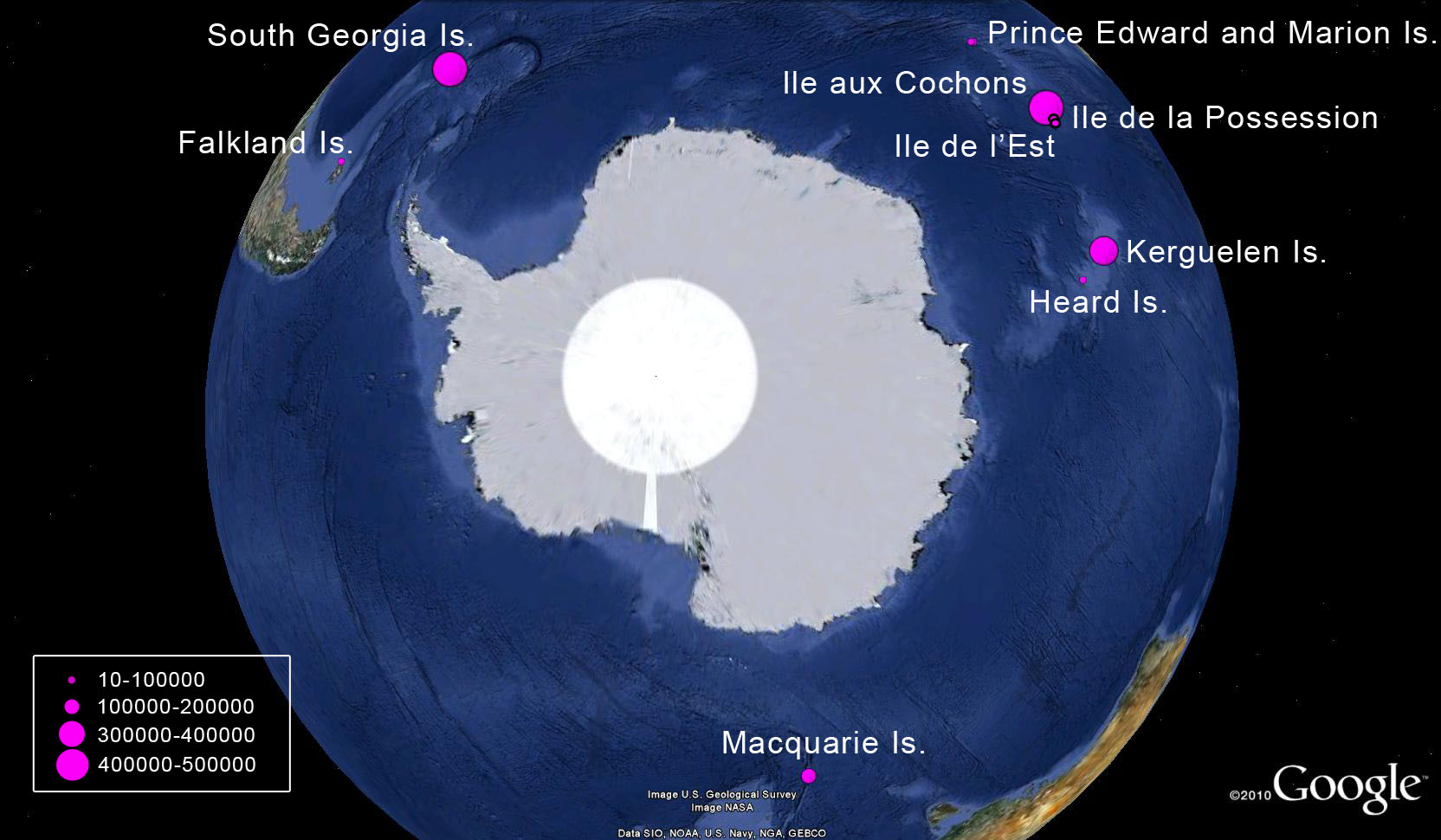King penguin - Aptenodytes patagonicus
- DESCRIPTION
- The second largest species of penguin (80-90 cm tall, 14-16 kg). Females tend to be of smaller than the males but both sexes have similar plumage: Ventrally white, dorsally a dark blue-black color. Head, chin, and throat black. Bright orange auricular patches extend around the neck region to the lower breast. The upper breast is a golden orange with yellow coloration which fades to white. Plumage in juveniles is similar to adults, but the auricular patches are less bright. Throat is grayish-white, crown feathers black with grey tips, mandibular plates black with pink. After two years juveniles molt into adult plumage. Chicks hatch with a brown-grey down, which is replaced with a thick brown down coat until 10-12 months of age. Mandibular plates remain black until chicks molt into juveniles.
- DISTRIBUTION
-
King Penguins breed on the subantarctic and temperate islands between 45° and
55°S, including South Georgia Islands, Crozet Island, Prince Edward Islands,
Kerguelen Islands, Macquarie Island, Falkland/Malvinas Islands, as well Tierra
del Fuego. Migratory.

- HABITAT
- They breed in dense colonies located amongst tussocks, gently sloping beaches, and sometimes can be over a kilometer inland.
- BREEDING BIOLOGY
- Breeders arrive between September-January; arrival date is highly variable because it depends on the reproductive success of the bird during the previous breeding season. Do not build nests, eggs are incubated on the adult’s feet and are covered by the adult’s brood patch, as in the Emperor penguin. The brood patch is an area of featherless skin located on the abdomen that is highly vascularized and is used for egg incubation. One egg is layed between November-March. The egg laying period is highly variable due to the 14-16 month breeding cycle. Incubation lasts 54 days. Chick rearing at 31 days. Fledgling at 313 days, from December 30-February 25 on South Georgia and from late October until early April on Marion Island. First breeding: at 5.9 years old.
- FEEDING
- Pelagic fishes like Lanternfish (Myctophidae), Escolars (Gempylidae), Barracudina (Paralepididae), and small contributions of squids and crustaceans.
- REPRODUCTIVE POPULATION
- 1,600,000 pairs.
- Conservation status (IUCN) and threats
- “Least Concern” (IUCN Red List 2018), due to populations are stable and most have increased in recent years probably due to a decline in commercial whaling. Main threats are the potential for competition with fisheries, and the increasing rain events at colony sites due to climate change.
- SOURCE
- Source: Bost, C. A., Delord, K., Barbraud, C., Cherel, Y., Pütz, K., Cotté, C., Péron, C., and Weimerskirch, H. 2013. King Penguin (Aptenodytes patagonicus). In PENGUINS: NATURAL HISTORY AND CONSERVATION (García Borboroglu, P.G. and Boersma, P.D. eds.) UW Press, Seattle U.S.A. 328 pp.




